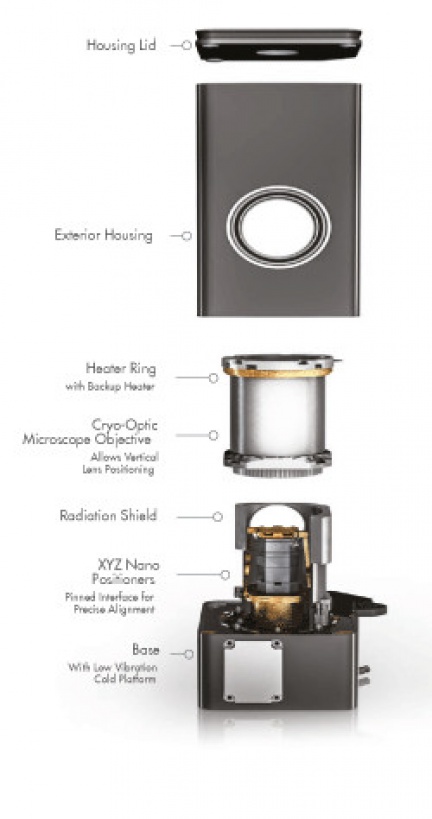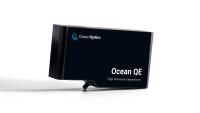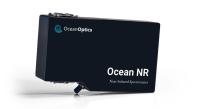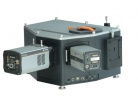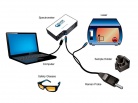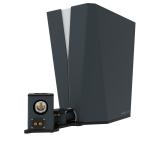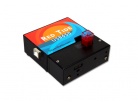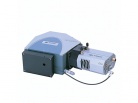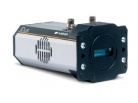Raman micro spectroscopy is a frequently used method for characterizing the chemical, magnetic, thermal and electrical properties of materials. In addition, Raman signal measurements are often performed at different temperatures of the sample to be measured. An example is photon anharmonicity, which has a significant impact on the thermal properties of a material.
In a conventional experimental setup, it is often impossible to measure samples with a weak Raman signal at low temperatures.
One possibility is to use a cryo lens, i.e. the lens is at the same temperature as the sample being measured. The advantage is that the lens can be close to the sample and thus a high numerical aperture (high collection efficiency of the measured signal) is achieved, but the disadvantage is that the lens parameters change with the temperature.
The second option is to have the lens at room temperature outside the sample area. However, here the problem is the large distance of the lens from the sample, which significantly reduces the numerical aperture of the whole assembly and causes low signal collection efficiency.
Prof. Kenneth Burch's group at Boston University, in collaboration with Montana Instruments, has developed a new experimental setup for low-temperature Raman spectroscopy. This configuration combines high Raman signal collection efficiency and high precision in sample temperature adjustment.
This setup uses an actively temperature-controlled objective and a Cryostation closed-cycle optical helium cryostat from Montana Instruments. The lens with a numerical aperture of 0.9 is placed close to the sample to be measured. The lens itself is maintained at room temperature by active temperature control, eliminating the problems of changing the lens parameters as its temperature changes.
The temperature of the sample itself can be precisely and quickly controlled thanks to a heating element located in the sample holder (e.g. temperature change from 4K to 350K in five minutes). The accuracy of the temperature adjustment of a few mK eliminates temperature drift of the sample to a minimum and, combined with the high mechanical stability, enables long integration time measurements with a spectral resolution of 30 cm-1.
More information can be found here.
